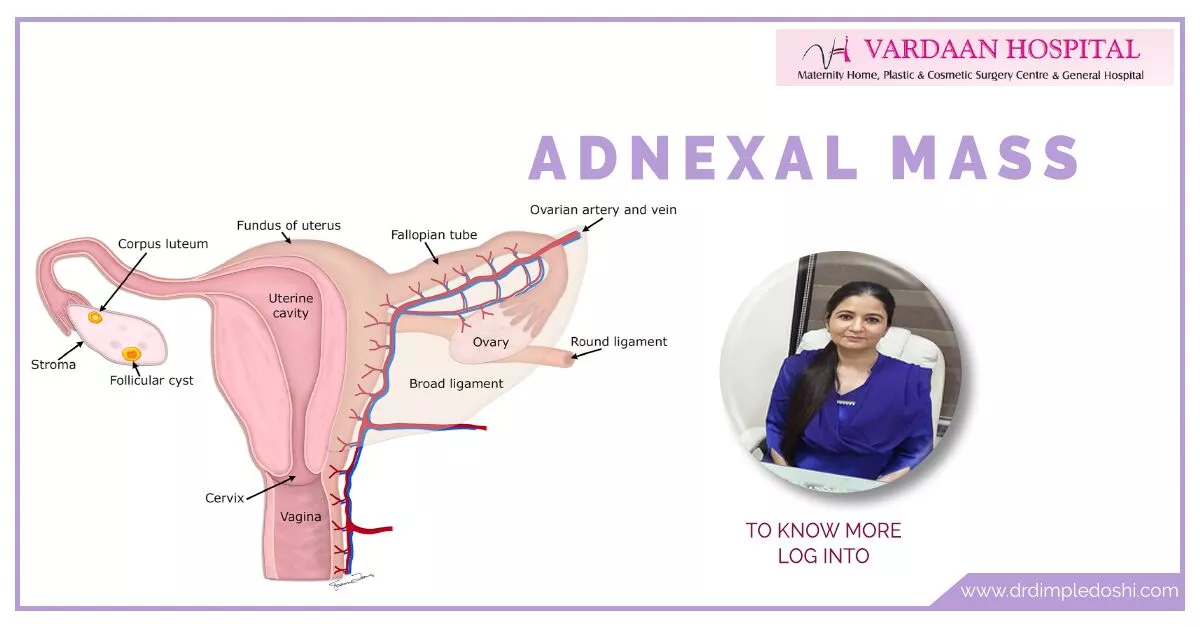Comprehensive Adnexal Mass Treatment in Goregaon West, Mumbai
Adnexal Mass
Overview
An adnexal mass refers to an abnormal growth or lump located in the region adjacent to the uterus, encompassing structures such as the ovaries, fallopian tubes, and surrounding tissues. These masses can manifest as cysts, tumors, or other structural anomalies. Adnexal masses are a common clinical concern, and their characteristics vary widely, ranging from benign cysts to potentially malignant tumors. An adnexal mass is also referred to as an adnexal tumor.
In this situation many adnexal tumor are benign and asymptomatic, others may cause pelvic pain, bloating, or irregularities in menstrual patterns. Diagnostic tools such as ultrasound, MRI, and sometimes biopsies are utilized to assess the nature, size, and characteristics of these masses.
Understanding the underlying causes, which can include ovarian cysts, endometriosis, or tumors, is crucial for determining the appropriate course of action.
It impact reproductive health, individuals experiencing symptoms or those with identified masses should consult with healthcare professionals for comprehensive evaluation and personalized care.
ICD-10 Codes for Adnexal Mass:
- N83.20: Unspecified ovarian cyst
- N83.29: Other ovarian cysts
- N84.0: Polyp of corpus uteri (in some cases where the mass is a polyp)
- N95.2: Menopausal ovarian mass (if the patient is postmenopausal)
CPT Codes for Adnexal Mass Evaluation and Treatment:
- 76830: Ultrasound, transvaginal (used to evaluate adnexal masses)
- 58662: Laparoscopy, surgical; with fulguration or excision of lesions of the ovary, pelvic viscera, or peritoneal surface (for removal or biopsy of the adnexal mass)
- 58660: Laparoscopy, surgical; with lysis of adhesions (if the mass is associated with adhesions)
- 58120: Dilation and curettage (D&C) of the uterus (if the mass is associated with abnormal uterine bleeding)
- 58720: Salpingo-oophorectomy, complete or partial, unilateral or bilateral (if the mass requires removal of the affected ovary or fallopian tube)

Best Lady Gynecologist at Vardaan Hospital; believes prevention is better than cure, and thus apart from the precise treatment guidelines; preventive measures are an essential part of our consultations with the patients who have either had it or want to know more about it.
What is an Adnexal mass?
The word adnexal tumor means the structures most closely related structurally or functionally to the uterus. And these adnexal structures include fallopian tubes, ovaries and the tissues surrounding the uterus.
Adnexal tumor is meaning is a lump or mass in the tissues surrounding the uterus like ovaries, fallopian tubes or the tissues around the uterus.
Adnexa are seen in younger women mostly include benign varieties while over 30% of adnexal masses in elderly and post-menopausal women are malignant. So these adnexal mass are to be evaluated and treated very fast.
Types of Adnexal Mass
It can be either
- Benign e. g. ectopic pregnancy, chocolate cyst, tubo ovarian or pelvic abscess, uterine fibroid extending into the adnexa.
- Malignant e.g ovarian tumor, any metastatic adnexal tumor from cancer of other abdominal organs.
Causes of Adnexal Mass
Some of the common causes of adnexal masses include:
- Ectopic pregnancy: A pregnancy where the fertilized egg implants somewhere outside the uterus.
- Endometrioma: A benign cyst on the ovary that contains thick, old blood that appears brown.
- Leiomyoma: A benign gynecological tumor, also known as a fibroid.
- Ovarian cancer: These tumors of the ovary may be ovarian epithelial cancers that begin in the cells on the surface of the ovary or malignant germ cell cancers that begin in the eggs.
- Pelvic inflammatory disease: Inflammation of the upper genital tract, which includes the uterus, fallopian tubes, and ovaries. It occurs due to an infection.
- Tubo-ovarian abscess: An infectious adnexal mass that forms because of pelvic inflammatory disease.
- Ovarian torsion: A gynecological emergency involving a complete or partial rotation of the tissue that supports the ovary, which cuts off blood flow to the ovary.
Diagnosis of Adnexal Mass
- Diagnosis of adnexal tumor can be made by:
- Physical examination by your gynecologist
- Ultrasonography
- CT scan or MRI pelvis
- Blood tests
Symptoms of Adnexal Mass
Symptoms of adnexal tumor may be different for different people depending upon its cause.
Common symptoms are:
- Severe lower abdominal or pelvic pain that is sometime only on one side
- Abnormal bleeding pattern; including heavy nf prolonged periods.
- Feeling of fullness, bloating, constipation, indigestion, nausea, vomiting
- Urinary symptoms
- Fatigue
- Fever
- Vaginal discharge
Treatment of Adnexal Mass
Conservative treatment:
If the adnexal tumor is small and you have no symptoms, then it may not require treatment at all. However, your gynecologist will monitor you with regular pelvic exams and ultrasounds.
Surgery will be needed if:
- The mass begins to grow
- You develop symptoms
- A cyst develops solid elements or any finding that is suggestive of cancerous nature of the mass.
Types of Surgery for Adnexal Mass
Laparocopy:
Laparoscopic removal of the adnexal tumor is the ideal treatment.
The advantages of laparoscopy include speedy recovery, less pain and cosmetically better appearance.
Laparotomy:
Laparotomy or opening up of the abdomen is indicated if
1. The adnexal mass is likely to be malignant
2. The patient is not fit to undergo laparoscopy
3. The adnexal mass is huge
Once removed, the adnexal mass will be sent to the lab to determine whether or not the cells contained within it are cancerous. If they are, further treatment may be required under the guidance of an onto physician.

